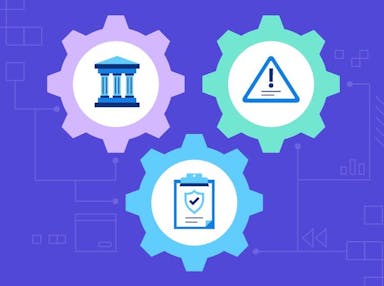
How to Get Started with IT Asset Inventory Management
Emily Bonnie
Senior Content Marketing Manager
Rob Gutierrez
Senior Cybersecurity and Compliance Manager, CISA, CCSK, CMMC RP
In a world where cyber threats are constantly evolving, knowing what you have is the first step in protecting it. Asset inventory management ensures that all assets within an organization’s network are identified, classified, and managed throughout their lifecycle.
In this article, we’ll delve into the key aspects of asset inventory management and explain how it fits into a strong cybersecurity program.
IT asset management explained
Imagine a mid-sized software company that’s grown quickly over the past few years. As the team grows, its IT infrastructure has expanded significantly. The company has purchased dozens of laptops and several types of software. But without a centralized asset management system, the IT department is facing growing challenges in tracking assets, managing software licenses, and ensuring timely maintenance and updates.
This is why IT asset inventory and management is so important.
Asset inventory is exactly what it sounds like — a running, comprehensive list of all of an organization’s tangible and intangible assets. This includes hardware (servers, computers, mobile devices, removable drives, USBs, etc.), software, software licenses, data, network configurations, and even intellectual property.
IT asset management (ITAM) is the process of tracking, managing, and maintaining an organization’s assets throughout their lifecycle, from procurement to disposal.
IT asset tracking and management are important for several reasons:
- Strategic Planning: IT inventory tracking ensures that technology is aligned with business objectives, aiding in strategic planning. Knowing what you have allows for smarter resource allocation, purchasing, forecasting, and other financial considerations as well.
- Risk management: Without proper asset inventory management, an organization is blind to what's in its network. Understanding what assets exist and their current state is essential for risk management.
- Resource Optimization: By knowing exactly what IT assets are available, organizations can prevent unnecessary purchases and better allocate existing resources. By tracking IT assets, organizations can also redistribute or retire underused or outdated assets to ensure optimal performance.
- Enhanced Security: Identifying vulnerabilities and prioritizing risks related to specific assets is more manageable when there's a clear and current inventory. IT asset tracking also helps with vulnerability management by identifying outdated or unpatched systems that might be vulnerable to cyber threats. Monitoring and controlling company assets also prevents unauthorized access and reduces the risk of data breaches. It is critical to retrieve terminated employee’s assets upon termination/offboarding.
- Compliance Management: Many regulations including SOC 2, NIST 800-53, FedRAMP, GDPR, and HIPAA require accurate tracking and management of IT assets that contain sensitive data. Proper asset inventory helps meet compliance requirements and avoid penalties. Accurate asset tracking also ensures that all necessary information is readily available for internal or external audits.
- Lifecycle Management: Tracking of IT assets makes it easier to ensure regular maintenance, updates, and renewals are being performed as needed. Knowing the lifecycle stages of assets also helps in planning for their end-of-life, whether that means disposal, recycling, or resale.
- Disaster Recovery: An accurate inventory of IT assets allows for a quicker response and recovery in the event of an environmental disaster.
- Enhanced User Experience: Knowing the exact configuration and status of IT assets allows support teams to provide more efficient and effective service to end-users.
- Environmental Responsibilities: Tracking IT assets helps organizations make environmentally conscious decisions about the disposal and recycling of equipment.
IT asset tracking is an essential part of maintaining a healthy and efficient IT environment, from improving cybersecurity to ensuring compliance with regulatory standards, managing costs, and even contributing to sustainability efforts.
Recommended Reading

What Is Governance, Risk, and Compliance (GRC)?
How to create and manage an IT asset inventory
Effective asset inventory management can help streamline business operations, reduce costs, and enhance strategic decision-making. To help you get started with your own IT asset inventory management, we’ve broken the process down into key steps.
Step 1. Identify IT assets
This involves cataloging all assets within your organization's ecosystem, including both physical and digital assets. Tools like mobile device managers, network scanners, and asset tracking systems can help automate and streamline this process.
Step 2. Classify assets
Once identified, assets should be classified based on their type, owners, criticality, and any other characteristics you want to track like cost or maintenance schedules. Classification helps in understanding the importance of and potential risks associated with each asset class.
Step 3. Document asset details
Document asset data, including its specifications, location, owner(s), serial number/barcode, lifecycle stage, and associated vulnerabilities. This information helps with resource planning, maintenance schedules, and risk management.
Step 4. Define lifecycle stages
Assets go through various stages, from acquisition to disposal. Understanding and managing these stages with periodic reviews ensures that your IT assets remain secure and compliant with any relevant regulations.
Step 5. Complete a risk assessment
Identifying vulnerabilities and threats associated with each asset class helps you select and prioritize security measures to mitigate risks. For example, installing email filtering to prevent phishing attacks.
Step 6. Integrate with other security tools
Connect your asset inventory with your other security tools such as vulnerability scanners, endpoint protection, continuous monitoring systems, and compliance automation platforms. These integrations create a single view across your entire security ecosystem.

Asset inventory management is more than just a list of what an organization owns. It's a foundational element to building a strong security posture. Identifying, classifying, documenting, and managing assets is essential for organizations to fully understand their risk landscape and make informed decisions about protecting valuable resources.
Simplify asset inventory management with Secureframe
Ensuring your company's cloud assets, personnel devices, and version control repositories are all in compliance can be tedious and challenging. Secureframe simplifies the process by providing an all-in-one platform to manage all of your security and compliance assets and activities in one place.
By compiling information from our Secureframe Agent and integrations, including Mobile Device Management (MDM), Version Control and Cloud Service Providers, our Asset Inventory gives you a filterable view of the status of your organization’s assets.
- Quickly see which devices have fallen out of compliance
- Use filters to customize your view of assets and resources
- Inventory, monitor, and control which cloud resources are in scope for an audit
- Configure in-scope version control repositories and include flags for specific requirements such as emergency changes and static code analysis testing.
- Assign task owners to ensure compliance issues are resolved quickly
Learn more by requesting a demo with a Secureframe product expert today.

Emily Bonnie
Senior Content Marketing Manager
Emily Bonnie is a seasoned digital marketing strategist with over ten years of experience creating content that attracts, engages, and converts for leading SaaS companies. At Secureframe, she helps demystify complex governance, risk, and compliance (GRC) topics, turning technical frameworks and regulations into accessible, actionable guidance. Her work aims to empower organizations of all sizes to strengthen their security posture, streamline compliance, and build lasting trust with customers.

Rob Gutierrez
Senior Cybersecurity and Compliance Manager, CISA, CCSK, CMMC RP
Rob Gutierrez is an information security leader with nearly a decade of experience in GRC, IT audit, cybersecurity, FedRAMP, cloud, and supply chain assessments. As a former auditor and security consultant, Rob performed and managed CMMC, FedRAMP, FISMA, and other security and regulatory audits. At Secureframe, he’s helped hundreds of customers achieve compliance with federal and commercial frameworks, including NIST 800-171, NIST 800-53, FedRAMP, CMMC, SOC 2, and ISO 27001.